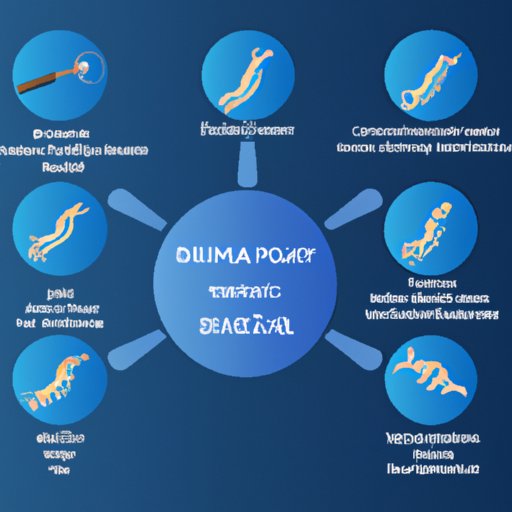
I. Introduction
Spinal muscular atrophy (SMA) is a rare genetic condition that affects motor neurons in the spinal cord, leading to muscle weakness and eventual loss of muscle control. While SMA is a relatively unknown disease, understanding the symptoms, diagnosis, treatment, and challenges of living with SMA can help patients and their families navigate the complexities of this condition. This article provides a comprehensive guide to SMA, including personal accounts, genetic counseling, clinical trials, financial support, and how to raise awareness for SMA.
II. A Comprehensive Guide to Understanding SMA Disease
SMA is a genetic disorder that affects motor neurons in the spinal cord and makes it difficult for patients to control their muscles. Depending on the severity of the disease, SMA can impact breathing, swallowing, and daily activities such as walking, lifting, and getting dressed. There are four main types of SMA, each with varying degrees of severity based on the age of onset and developmental milestones. The signs and symptoms of SMA can range from mild weakness to complete paralysis, and the disease is often diagnosed through genetic testing. While there is no cure for SMA, early diagnosis, personalized treatment plans, and physical therapy can help patients manage their symptoms and maintain a good quality of life.
III. Living with SMA: One Patient’s Account of the Disease and Its Impact
Living with SMA can be challenging, both for patients and their families. One patient shared that they often face difficulties with daily tasks such as getting dressed, brushing their teeth, and carrying groceries. They also experience breathing difficulties and may require a ventilator or other respiratory support. Despite the physical limitations of the disease, patients can find coping strategies, such as using assistive devices, working with a physical therapist, or finding emotional support through counseling or support groups. Resources such as the Muscular Dystrophy Association (MDA) or Cure SMA can help connect patients with the tools and support they need to manage the disease on a daily basis.
IV. The Genetics of SMA Disease: How It Is Inherited and Potential Treatments
SMA is caused by a mutation in the SMN1 gene, which encodes SMN protein involved in motor neuron function and development. SMA is inherited in an autosomal recessive pattern, meaning that both parents must carry a copy of the mutated gene for their child to develop the disease. Genetic counseling and testing can help families understand the risk of the disease and their options for family planning. While there is currently no cure for SMA, research is ongoing, and there are promising treatments available, such as Spinraza and Zolgensma, gene therapies that have shown effectiveness in slowing the progression of SMA in clinical trials.
V. Current Research on SMA Disease: Promising Therapies and Clinical Trials
Current research on SMA disease is focused on finding treatments and potentially a cure for this rare disease. One promising therapy is Spinraza, a medication that targets SMN2 gene splicing to increase production of full-length SMN protein. Zolgensma is a gene therapy that aims to replace or restore the missing SMN1 gene. Clinical trials for SMA are ongoing, and patients can find information and resources through organizations such as Cure SMA or the SMA Foundation.
VI. The Economics of SMA: Navigating Insurance and Financial Support
Living with SMA can be costly, with expenses such as medical equipment and home modifications, and insurance may not always cover these costs. Medi-Cal and financial assistance programs, such as Family Medical Leave Act (FMLA) and the Americans with Disabilities Act (ADA), can provide additional support. Cure SMA and the MDA offer resources to help families navigate insurance coverage and financial planning for living with SMA.
VII. Raising Awareness for SMA Disease: Advocacy Organizations and Fundraising Efforts
Raising awareness for SMA disease can help provide resources and support for patients and their families. Advocacy organizations such as the SMA Foundation, the Muscular Dystrophy Association, and Cure SMA offer resources, patient education, and fundraising efforts to support SMA research and community awareness. Social media can also be a powerful tool for raising awareness and connecting with others in the SMA community.
VIII. Conclusion
Spinal muscular atrophy is a rare genetic disease that can have a profound impact on patients and their families. While it may be difficult to navigate the complexities of the disease, understanding the signs and symptoms, diagnosis, treatment options, and available resources can help patients manage their symptoms and optimize their quality of life. By raising awareness and supporting research efforts, we can work towards developing more effective treatments and, ultimately, a cure for SMA.




